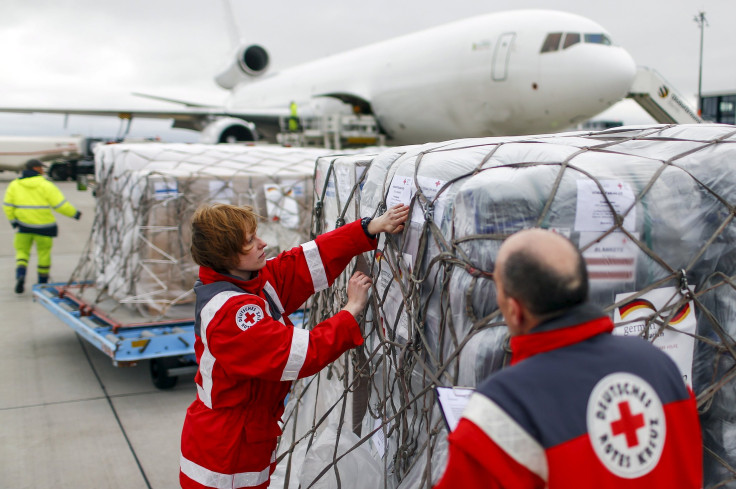As Nepal Earthquake Death Toll Climbs, You Can Donate To American Red Cross, UNICEF, Doctors Without Borders, And More

Disaster struck after a 7.8-magnitude earthquake hit Nepal on April 25, leaving behind a catastrophic death toll that has climbed to more than 3,700 and has left thousands more injured or unaccounted for. The earthquake, triggered by a series of avalanches down Mount Everest, is the worst Nepal has seen in 81 years, according to Reuters. An international effort has collaborated to bring disaster relief to the poverty-stricken Kathmandu Valley region. Citizens in the area are especially susceptible to health risks because of the lack of medical provisions.
Aid groups quickly responded to the calamitous wrath of Mother Nature by sending emergency response teams specialized for disaster. Currently, communication is very difficult from within Nepal, which makes it harder for relief teams to assess the needs of citizens and the extent of the infrastructure damage. With telephone lines down and electricity shut down leaving mobile phones without charge, there is minimum contact to the outside world from within.
Residents living along the remote mountain villages were the center of the devastation, and currently have no running water and are also quickly running out of food. All of the houses have collapsed, which have forced villagers to walk down into the jungle to bury bodies beneath piles of dirt. The mountainous terrain has blocked rescuers from entering in the aid-desperate areas. Tents are resurrected by the swarms around the bases of mountains lined with roads and open fields, but after 15 aftershocks ranging from 5 to 6.6 magnitudes, locals and emergency teams worry there could be landslides to follow.
Nepal is one of the world’s least developed countries (157 out of 187 on the UN Human Development Index) and has a population of nearly 30 million, of which 37 percent live in severe poverty. The International Federation of Red Cross and Red Crescent Societies launched a preliminary emergency appeal to support the Nepal Red Cross. Their goal is to deliver assistance to 75,000 people who were affected, such as emergency shelter, basic household items, psychosocial support, dignified burials, and family restoration services.
To donate, visit each relief responder below:
American Red Cross: More than 19,000 relief kits have been sent to disaster location, which include clothing, kitchen sets, tarpaulins (tarps), mosquito nets, and personal hygiene items. The Nepal Red Cross has enough stock to sufficiently cover 50,000 families. An information management delegate has been deployed on-site to make a more accurate assessment of destruction.
UNICEF: The children’s agency says nearly one million children need assistance in Nepal. Children have been separated from their families, and with minimum access to safe water and sanitation, the danger rises. The group has already prepared two cargo flights with 120 tons of humanitarian supplies, including medical and hospital necessities, tents, and blankets fit to cover the needs of 40,000 people. The relief supplies are being sent on urgent airlift directly to Kathmandu.
UN World Food Program: Emergency response and logistics teams have already arrived in Kathmandu. They’ve taken on the responsibility of providing food items for the millions of locals and response teams.
Mercy Corps: The group is working with the Nepal Red Cross. After making an assessment, they’ve warned the price for supplies is rising. They have more than 90 staff members on the ground in Nepal distributing essential household supplies, shelter kits, and tarpaulins.
Oxfam: A team is on location currently determining the quantity of needs for emergency food, water, and sanitation supplies. They’re preparing to launch an emergency response focused on water and sanitation distribution. Teams are preparing to fly in from the UK and Thailand to help.
Save the Children: Emergency kids, hygiene materials, and tarpaulins have already arrived in Nepal and are prepared for distribution, while emergency teams packed with additional supplies are to follow. They currently have staff from all 63 district locations working to assemble kits.
Doctors Without Borders: Eight teams of medical staff, emergency surgeons, and supplies left on Sunday out of Bihar, India to help bring necessary medical attention to those in the devastation. Another team of non-medical staff left from Japan, and more emergency supplies are being sent from France.



























